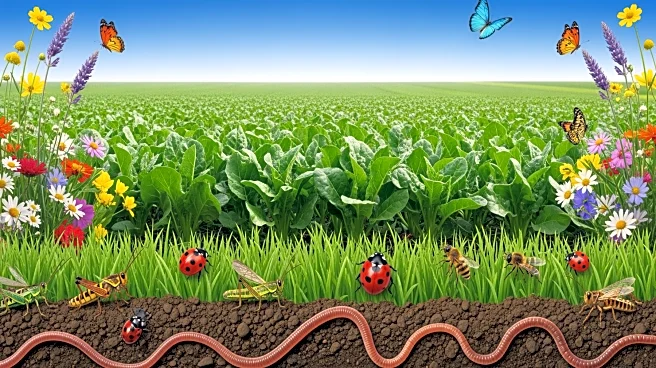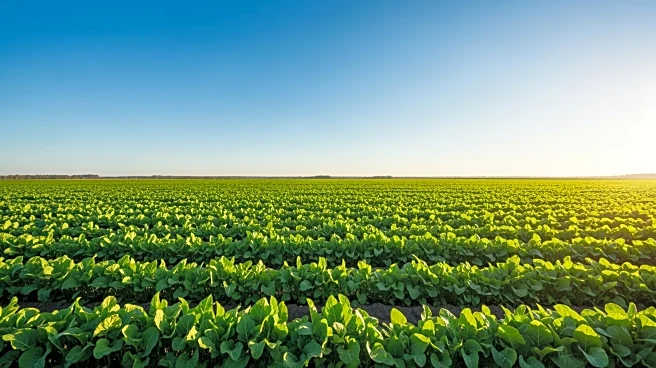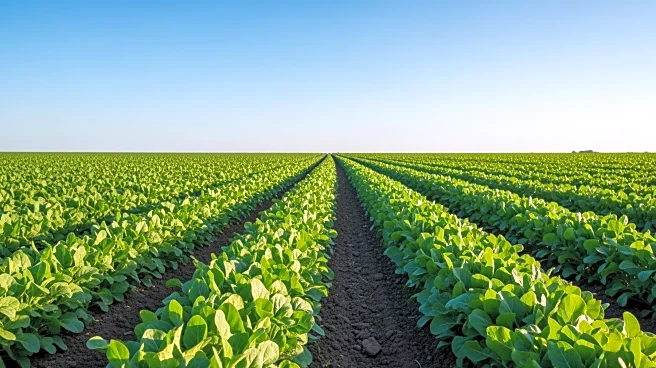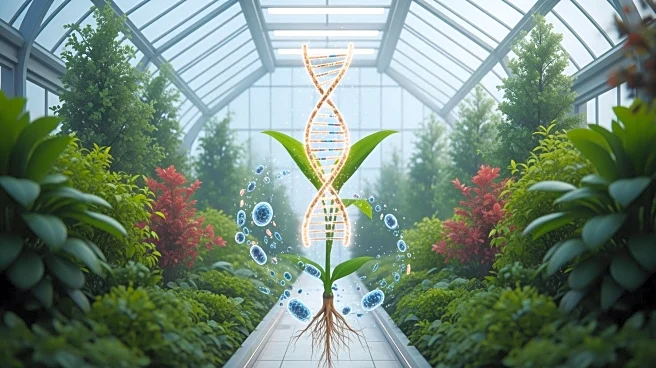What's Happening?
The Ag Economy Barometer survey conducted by Purdue University-CME Group has revealed trends in cover crop adoption among U.S. farmers over the past five years. The survey indicates that approximately 53% of respondents currently plant cover crops, with
adoption rates ranging from 52% to 57% during this period. Cover crops are planted on 4.7% of total cropland nationwide, but the survey shows a higher adoption rate among respondents, with 22% of farm acreage devoted to cover crops. The survey also highlights motivations for planting cover crops, such as improving soil health and erosion control, with 75% of respondents reporting positive impacts on soil health and crop yields.
Why It's Important?
Cover crops play a crucial role in sustainable agriculture by enhancing soil health, reducing erosion, and improving water quality. The higher adoption rates among survey respondents compared to the national average suggest a growing recognition of these benefits among farmers. However, barriers such as profitability concerns and yield impacts continue to hinder broader adoption. Understanding these trends is vital for policymakers and agricultural stakeholders to develop effective incentive programs and support sustainable farming practices. As environmental concerns rise, cover crops could become a key component in efforts to mitigate climate change and promote agricultural resilience.
What's Next?
Continued monitoring of cover crop adoption trends will be essential to assess the impact of economic conditions and incentive programs on sustainable farming practices. As farmers gain more experience with cover crops, there may be increased adoption and refinement of techniques to maximize benefits. Policymakers and agricultural organizations may focus on addressing profitability concerns and providing support to encourage wider adoption. The long-term sustainability of cover crop use will depend on balancing economic viability with environmental benefits.
Beyond the Headlines
The adoption of cover crops reflects broader shifts towards sustainable agriculture, with implications for soil conservation, carbon sequestration, and climate resilience. As farmers increasingly recognize the benefits of cover crops, there may be opportunities for innovation in crop management and soil health practices. The integration of cover crops into farming systems could lead to long-term improvements in agricultural sustainability and productivity, aligning with global efforts to combat climate change.













